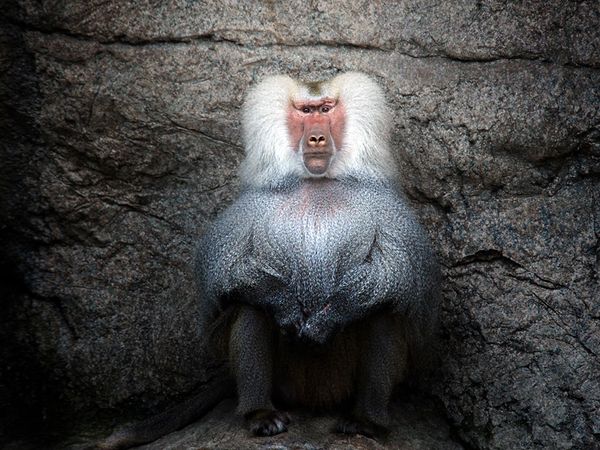The best photos from National Geographic July 2010.

King Penguins
Photograph by David Schultz , My Shot
Strikingly colored, an adult king penguin stands out in a sea of chicks on South Georgia Island.
(This photo was submitted to My Shot.)

Baboon, Bronx Zoo
Photograph by Richard Conde, My Shot
A baboon in the Bronx Zoo, New York
(This photo and caption were submitted to My Shot.)

Stretching Tiger, India
Photograph by Michel Zoghzoghi, Your Shot
A tiger stretches its powerful form on a branch in Bandhavgarh National Park in the central Indian state of Madhya Pradesh.
(This photo was submitted to Your Shot.)

Bowerbird, Australia
Photograph by Tim Laman, National Geographic
The gunk on the beak of this satin bowerbird (Ptilonorhynchus violaceus minor) is plant matter, which he mashed up to paint his bower's inner sanctum in a rain forest in Queensland, Australia. The pulp adds a hint of color and perhaps flavor: Females sometimes take a taste during the male's display.

Black-Headed Gull, England
Photograph by Christopher Hoyle, Your Shot
I was taking pictures of the scenery near Lake Windermere in the U.K. This black-headed gull was flying straight at me. It was oblivious to the camera for a while but then put the brakes on and flared its wings before it hit me in the lens. That intense look must be the last thing many small creatures see.
(This photo and caption were submitted to Your Shot.)

Tokay Gecko
Photograph by Erin Yard, Your Shot
A Tokay gecko hangs upside down in its terrarium at the Academy of Natural Sciences in Philadelphia, Pennsylvania.
(This photo and caption were submitted to Your Shot.)

Grizzly Bear
Photograph by Carol Bock, My Shot
A wet grizzly takes a break and dries off on a log.
(This photo was submitted to My Shot.)

Frog, New Guinea
Photograph by Tim Laman, National Geographic
Hylarana aurata, found in the Foja Mountains of New Guinea, one of the remotest and most difficult to reach places on Earth.

Lion’s Mane Jellyfish
Photograph by Paul Nicklen, National Geographic
A lion's mane jellyfish nestled in a kelp frond.

Cheetahs, Kenya
Photograph by Mauro Mozzarelli, My Shot
Most wild cheetahs are found in eastern and southwestern Africa. Perhaps only 12,000 of these big cats remain, and those are under pressure as the wide-open grasslands they favor are disappearing at the hands of human settlers.
(This photo was submitted to My Shot.)
 Explore an unparalleled treasury of iconic images and groundbreaking photography in National Geographic Image Collection, 2010 People's Voice Webby Award Winner.
Explore an unparalleled treasury of iconic images and groundbreaking photography in National Geographic Image Collection, 2010 People's Voice Webby Award Winner.
The best photos July 2010.
The National Geographic Society (NGS), headquartered in Washington, D.C. in the United States, is one of the largest non-profit scientific and educational institutions in the world.
Its interests include geography, archaeology and natural science, the promotion of environmental and historical conservation, and the study of world culture and history.
The National Geographic Society’s logo is a yellow portraitframe - rectangular in shape - which appears on the margins surrounding the front covers of its magazines.
If you liked this article, subscribe to the feed by clicking the image below to keep informed about new contents of the blog:


Comments
Post a Comment